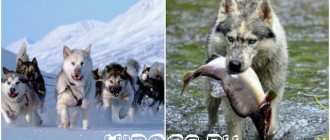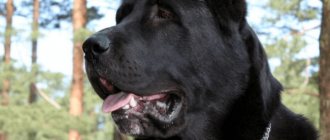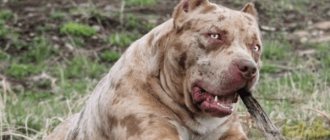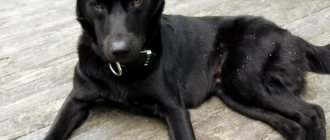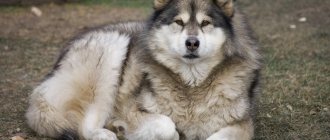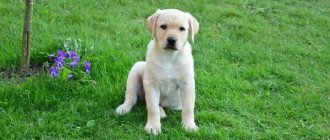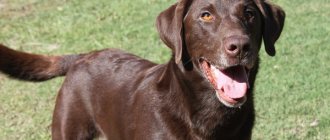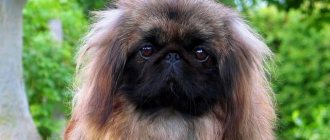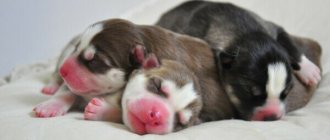The Toy Terrier is a decorative dog that has won the hearts of city residents.
Today, increasingly at social events, famous personalities appear in the company of these funny creatures.
Toy terriers are regaining the glory of salon dogs that originally belonged to them since the 18th century, when they were regulars in the living rooms of aristocrats.
The custom of keeping charming little ones in the house came to Russia along with the fashion for everything English.
The breed was bred in England for purely pragmatic purposes for hunting rats.
The attractive appearance and miniature size of terrier dogs appealed to noble people, and the dogs gradually turned into decorative ones.
Origin story
In Russia, toy terriers were very popular until the beginning of the 20th century. After the revolution, the breeding of such a “bourgeois” breed was not welcomed; there was no influx of new blood, as well as contacts with Western dog handlers.
At the end of the 50s, enthusiasts made an attempt to revive the breed, collecting its representatives bit by bit . The result of selection work was a new breed - the Russian Toy Terrier, which includes smooth-haired and long-haired varieties.
The breed standard was adopted in 1965.
The International Association of Cynologists officially registered the breed in 2006 under the name “Russian Toy”.
The Russian Toy and the English Toy Terrier have many differences; they are different breeds that have a common ancestor.
For an “Englishman”, according to the standard, only black and tan color is acceptable, while Russian Toys, in addition to the standard black, can be brown, chocolate, red, fawn and even blue and lilac.
Lilac and blue colors are obtained if the toy terrier genes contain a recessive, weakening color . This gene reduces the saturation of the shade of the coat, as if blurring it.
Black puppies with this gene are born grayish-blue, and brown puppies are born reddish-blue, called lilac.
At what age is the tail docked?
Dog experts agree that the best time to dock a tail is at birth.
A newly born puppy does not feel pain , so the procedure is much easier. If for some reason docking was not performed during this period, then the procedure should be carried out by a veterinarian. The appropriate age for a completely healthy puppy is 3-4 days after birth.
If the puppy does not participate in exhibitions, then such a procedure is not necessary at all.
Marriage or breed
Tribal marriage among the Toys includes:
- malocclusion (overbite or underbite);
- a significant number of white spots;
- white color;
- bald spots in smooth ones;
- lack of fringe on the ears of long-haired dogs;
- hanging ears (smooth-haired);
- short legs;
- aggressiveness;
- too tall, heavy weight.
According to the breed standard, the toy should be elegant and compact.
Main characteristics of the breed:
- squareness. The height at the withers is equal to the length of the body;
- high thin paws;
- small head. The transition from forehead to muzzle is clearly defined. The muzzle makes up one third of the skull.
- eyes are round, convex, large;
- the color of the nose, lips, eyelids depends on the color;
- ears are high-set, hanging (with fringe);
- the neck is graceful, slightly curved;
- back straight;
- chest deep;
- the tail is raised above the horizontal line (if not docked);
- The coat is short, shiny or long with feathering. The more the feathering contrasts with the length of the hair on the body and head, the better.
Expert opinion
Kozhevin Semyon Kirillovich
Expert dog handler.
For me, the Russian Toy is a small dog for big love. Ideal for home and apartment. He eats little and requires little space. She doesn't need expensive grooming. Very comfortable in everyday life. Like any terrier, it needs training. Any dog, regardless of size, must take an obedience course.
Disease susceptibility
Toy terriers are susceptible to diseases such as:
- enteritis;
- plague;
- rabies;
- hepatitis;
- conjunctivitis;
- allergy;
- leptospirosis.
Expert opinion
Anna Abramenko
An avid dog lover. Experience in veterinary medicine since 2009.
Ask a Question
If you suspect the development of one of these diseases, your dog requires immediate veterinary attention.
Photos of lilac toy terrier colors
“Pink Ice” is a poetic name for the purple color of the toy.
Lilac and tan
The color is pinkish-brown with a blue or gray tint . The wool has a bluish, silver, gray-pink tint. The nose matches the color or is gray. Maybe with a tan mark.
Lilac with red
Red color with an unusual shade. The nose is light brown, gray, the eyes are light.
Isabella
The coat color is pinkish-cream with a blue or gray tint.
Gray slate nose, gray rather than black mask on the muzzle . The tint of the coat is bluish, silver or dirty pink.
There may be grey, pinkish-gray or bluish shading on the back and ears. Isabella does not have a tan.
Standard colors
Smooth-haired Toy Terriers come in all different shades. However, such standards were approved relatively recently. Even before the middle of the last century, representatives of this breed had one common shade of coat: breeders recognized the Toy Terrier as exclusively black and tan.
Nevertheless, already in the 70s of the 20th century, brown and tan, as well as red dogs, began to be actively demonstrated at exhibitions. Over time, other varieties of toys appeared. Breeders have become so attracted to colorful miniature dogs that now the variety of their colors will amaze any dog breeder.
Interestingly, it is difficult to predict what shade of coat a newborn puppy will have. The genetic makeup of this breed is confusing. Those who want to know in advance what coat colors the puppies will have need to carefully trace the pedigree of the dog's parents.
In the body of a toy with shaggy ears, there is also a recessive gene that can somewhat weaken the base shade. If a newborn puppy has a similar gene, the black pet will have a grayish-blue coat color, and the brown one will turn purple. The muted shade of the coat is valued by professional breeders. Remember that even these watercolor colors of a dog's hair may include tan marks. This is not a disadvantage of the breed; rather, on the contrary, puppies with this color are very expensive and are considered quite popular all over the world.
If you clearly identify the shades of coat that, according to the standard, may be present in Toy Terrier puppies, first of all pay attention to the following colors:
Among the much rarer shades are blue, lilac, and isabella. As you can see, the black and brown pet is currently not the only representative of the breed called Toy Terrier.
Choose a puppy with the color you like, but do not forget: make sure before purchasing that you have chosen a truly purebred representative with a good pedigree.
Advantages and disadvantages
Before getting yourself a dog, it would be good to first become acquainted with the characteristics of the breed.
The advantages of these include:
- compactness and charm;
- the ability to take your pet on trips, to a restaurant, to a meeting;
- ease of maintenance in a city apartment;
- low maintenance requirements;
- devotion to the owner;
- high intelligence.
Minuses:
- high risk of injury due to the fragility of the skeleton;
- the need to buy clothes for the pet, since toys do not have an undercoat and are susceptible to hypothermia;
- excessive excitability and overactivity of animals, which, however, is regulated by correct and timely education;
- Dogs absolutely cannot stand loneliness and require constant attention. This is not a minus, but an important feature of the breed that you need to think about first;
- There is an opinion that the life expectancy of dogs with rare colors is not long.
Summarizing
The Longhaired Toy Terrier is a charming little dog with a doll-like appearance, but a big and brave heart. Such a pet should be owned by a sensitive and gentle person who understands how important walks, training and a caring attitude are for a dog.
If the owner can properly socialize the toy terrier, give him enough opportunities to show his high intelligence, and devote a lot of time and effort to him, then he will receive a faithful friend and companion for any activity, be it a long journey, an interesting walk, or just watching TV on sofa
Active walks mean a healthy dog!
Distinctive features
Russian Toys are very active small decorative dogs.:
- Weight – up to 3 kg
- Height at withers – up to 28 cm
The dog is very lively, playful, jumping. Affectionate and loyal, always protects the owner. A funny creature that can give you many fun minutes.
Toys are overexcitable, which results in almost constant trembling. The lack of undercoat makes them susceptible to even mild cold. For walks in unfavorable times of the year, the animal needs warm clothes.
NOTE!
Toys are easily litter trained, so there is no need to be outside every day. But then the problem arises of releasing energy, which dogs have in abundance.
Despite its miniature size, the animal is not a toy; it must be handled, taught from an early age to the norms of behavior, so that both the pet and the owner can live comfortably.
Lilac Toys shed differently than puppies of classic colors . The puppies look moth-eaten. The experience of breeders suggests that the use of antifungal shampoos can improve the appearance of babies.
You should also include vitamins in your diet. In toys, the time of molting coincides with the transition period, the so-called immune pit, when there is a sharp drop in immunity.
But even if you do nothing, the molting will go away by itself, you just need to be patient and not panic in vain.
Adult pet weight
An adult dog weighs about 3 kg.
| Boys | Girls |
| 1.5-1.8 kg | 2-3 kg |
Sometimes there are mini toys weighing 0.9-1 kg. This weight is considered normal for a boy.
But if you are going to breed puppies, the Toya girl must weigh more than 1.8 kg for gestation and birth without complications.
More often 1-3 puppies are born . Their weight is 70-170 grams, which is a lot for such a small dog.
Expert opinion
Tolkachev Andrey Mikhailovich
veterinarian
The standard states that the weight should not exceed 3 kg. But such precision is needed for exhibitions. If your pet’s diet is balanced and there are regular walks, then a slight excess of 0.5 kg is not dangerous. Focus on appearance and the absence of symptoms of obesity: constipation, shortness of breath, sweating. Do not forget that there is a conditional division into super mini - 1.2 kg, mini - up to 1.5 kg and standard - 3 kg.
Life expectancy and health
Russian Toy Terriers live on average up to 10-15 years . Life expectancy often depends on the quality of the dog's care. Toys have a remarkable ability to quickly recover from illness.
To improve health you need:
- active walks in the fresh air. If the dog does not exercise enough, joint diseases may develop;
- warm clothes and shoes for the pet to prevent hypothermia;
- the need to remember the fragile structure of the toy. Jumping from heights should not be allowed;
- correct diet. Salt and spices, sausage and sweets should be prohibited. It is necessary to take care of vitamins. Do not overfeed;
- regular visits to the veterinarian.
They are not insured against eye diseases.
Most common:
- cataract.
- progressive retinal atrophy.
Neurological diseases are not uncommon for toys.
Prohibited Products
It is important to exclude prohibited foods from your toy terrier puppy’s diet:
- Bones, pure fat, skin, especially poultry.
- Palm oil.
- Grapes, raisins.
- Soy.
- Mushrooms.
- Corn and semolina.
- Raw freshwater fish.
- Dry, salted fish.
- Products containing sugar or sugar substitutes.
- Products containing xylitol (chewing gum, some sweets).
- Products containing flour or yeast.
- Products containing caffeine, cocoa, any stimulants (sweets, tea, coffee, chocolate).
- Products containing marinades, salt, spices.
- Smoked products, including sausages, balyki, fish.
- Expired products.
- Leftovers from the table.
Controversial foods in the diet of a toy terrier puppy are:
- Lean raw pork.
- Raw ocean fish.
- Whole milk.
- Honey.
- Chicken eggs.
- Raw and boiled chicken liver in large quantities.
Products from the “controversial” list can be given to a toy terrier puppy if an allergic reaction, diarrhea and other alarming symptoms do not occur after taking them.
Basic rules of care
Caring for toys is easy. It can be expressed in two words - attention and love.
And in a little more detail, pets need:
- your permanent place in the house;
- balanced diet (ratio of meat, cereals, vegetables, fruits – 30: 35: 2 5: 10%);
- walks;
- combing;
- nail trimming (frequency – 1.5-2 months);
- bathing (once a month);
- taking care of the ears and eyes (clean and examine to avoid infection).
Price range
The price range is quite wide - from 25 to 85 thousand rubles.
Price depends on:
- prices for puppy parents;
- cost of maintaining parents;
- veterinary services, quality vaccines;
- payment for mating;
- cost of parent exhibitions;
- efforts spent on raising a puppy;
- correctly executed documents.
How to choose a puppy
- Find a nursery with a good reputation.
- View the puppy's parents.
- At least 2.5 months of age is desirable.
- 2 vaccinations must be given (with a note in the veterinary passport).
- Bald areas of fur are not allowed.
- The baby should not be aggressive or lethargic.
- There should be no discharge from the nose or eyes (indicative of poor care).
- You need to make sure you have a pedigree.
The charm of the lilac toy, enhanced by the originality of its color, will evoke admiring glances from others and make its owner the center of attention of any society..
